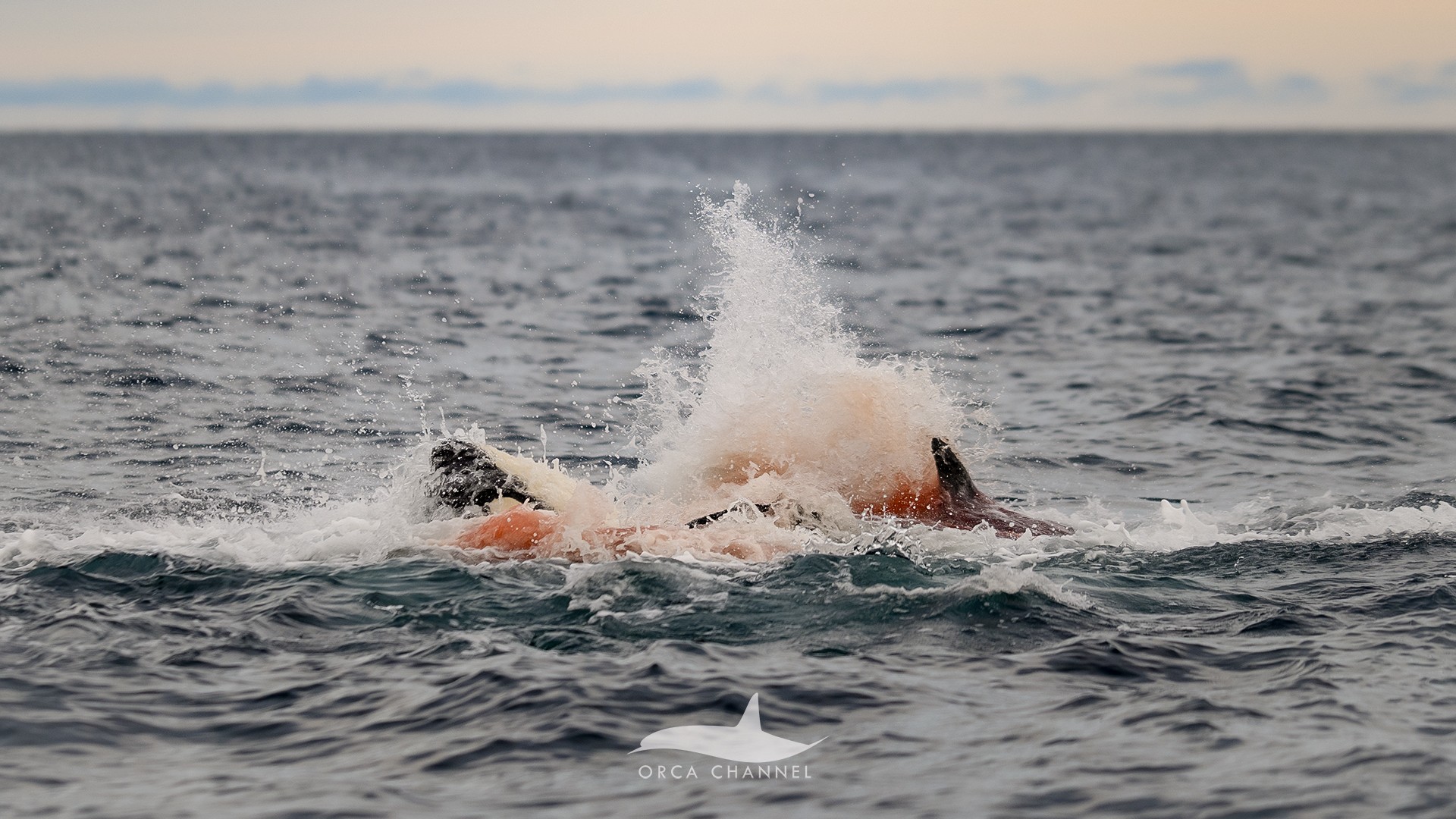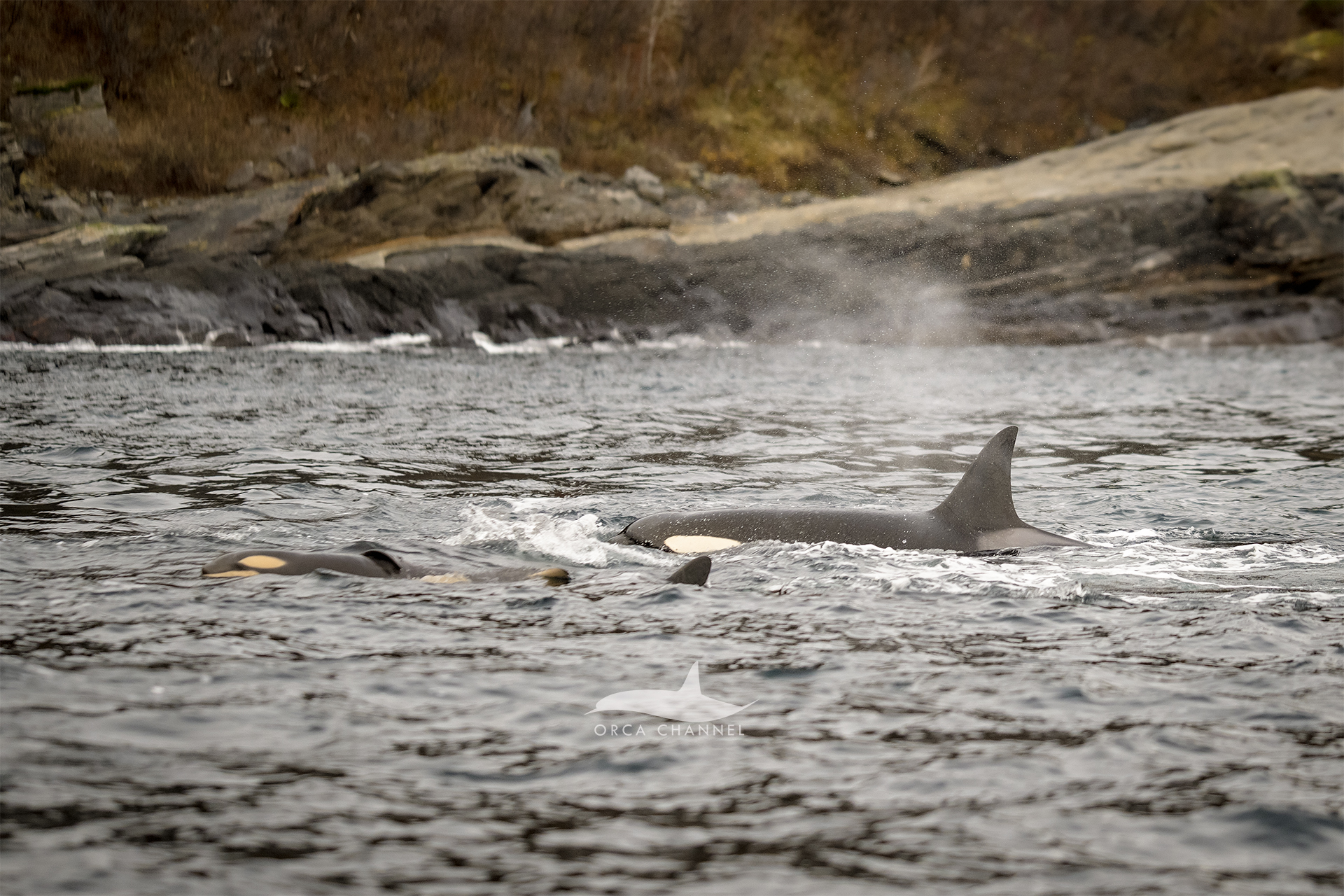Incredible, first-of-their-kind images show an orca being born in Norway — and the rest of its pod forming a protective circle
Scientists with the Norwegian Orca Survey and Orca Channel have documented, for the first time and in astounding detail, the birth of an orca and the newborn's first hour.

Scientists in Norway have witnessed the birth of a baby orca in the wild, first-of-their-kind pictures show.
The researchers were observing a group of orcas (Orcinus orca) during a whale-watching trip off the coast of Skjervøy in the Arctic Circle when the water around the animals suddenly turned crimson with blood, they said.
"We were floating calmly and watching the feeding, when all of a sudden, close to the boat, there was blood spilling and splashing everywhere," Krisztina Balotay, a photographer and videographer at Orca Channel, a boat tour company that also gathers marine mammal data in Norwegian waters, wrote in a Facebook post on Nov. 2.
"At first, I had no idea what was going on," Balotay wrote in the post. "A moment later, I saw a little head pop above water. As it turned out, a female gave birth right next to us."
Moments after the calf was born, the rest of the group formed a protective circle around it. The orcas, mostly females and juveniles, were unusually energetic and seemed to be forcefully pushing the newborn toward the surface, which worried the team on the boat at first.
"We observed them carrying the calf on their back and holding it above water for air," Balotay wrote. "I was not sure if it was alive."
Scientists with the Norwegian Orca Survey, a research and conservation organization, flew a drone above the orcas to take a closer look. They also asked five other whale-watching boats that were on the scene to clear the area so the animals could calm down, representatives of the survey wrote in a Facebook post on Nov. 3.
Get the world’s most fascinating discoveries delivered straight to your inbox.





Footage from the drone showed that the calf had struggled to stay afloat for the first 15 minutes after birth, but that it was alive and well after that.
"The mother was identified as NKW-591, a known female first identified in 2013," the representatives wrote. "She has had multiple offspring and is therefore an experienced mother."
The calf's dorsal fin was bent, but this is to be expected in the hours after a newborn emerges from the womb, Balotay noted in Orca Channel's post. "It was so amazing to watch something like this in the wild," she added.
This is the first documented case of an orca being born in the wild and of its first hour alive, Norwegian Orca Survey representatives wrote on Facebook. The team followed the orcas until darkness fell, maintaining a distance of more than 1,000 feet (300 meters) so as not to disturb the animals. "We also ensured the whales' space was protected by stopping additional boats from approaching," they said.
The Norwegian Orca Survey hope they will encounter this orca group and the calf again in the coming weeks. In the meantime, researchers will collate the data they collected during and after the birth for a study.
"Documenting calf survival remains one of the core objectives of our long-term research," they said.

Sascha is a U.K.-based staff writer at Live Science. She holds a bachelor’s degree in biology from the University of Southampton in England and a master’s degree in science communication from Imperial College London. Her work has appeared in The Guardian and the health website Zoe. Besides writing, she enjoys playing tennis, bread-making and browsing second-hand shops for hidden gems.
You must confirm your public display name before commenting
Please logout and then login again, you will then be prompted to enter your display name.


